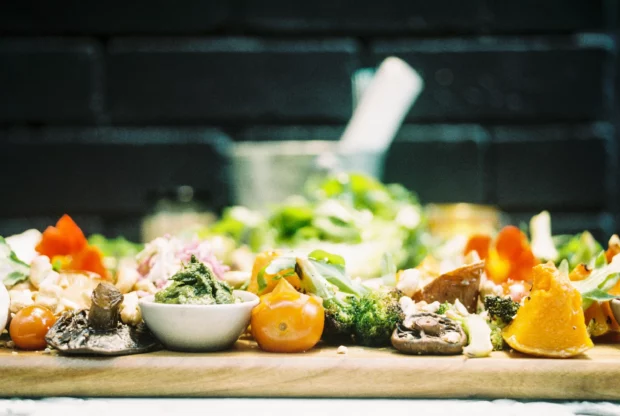
Welcome to our blog post for December – the festive season! This joyful time of year is full of plenty and abundance, but it can also be excessive and careless – especially when it comes to food waste. So it seems only fitting that today we are talking about our new efforts to improve food waste management in our restaurants, as well as our water efficiency and conservation. Let’s get into it.
Our plan to reduce food waste
As a restaurant group, we’ve set an ambitious (but achievable) target to halve the amount of restaurant food waste we produce by 2030. This is against a 2022 baseline.
Our goals include food waste produced kitchen prep, spoiled food (past use-by date and rotten) and the food that goes uneaten by guests (known as plate waste).
To really understand how much food waste we produce across the restaurants, a two-week review is planned. Here we will split out the restaurant waste into the three waste streams, whereby each will be weighed at the end of each day. This allows us to estimate the amount produced annually (via some multiplication).
Not only does this process give us a usable number, it also identifies where food waste is most prolific in our restaurants. From this evaluation, we can make more tailored recommendations for initiatives that can reduce food waste.
What will our new food waste management initiatives include?
Reviewing menu development – try to make use of all ingredients – peelings and all!
Reviewing portion sizes (don’t worry, we’ll make sure you still have a healthy amount of food on your plate).
Helping guests when making decisions about how much food they want to order.
Implementing new training for the front of the house on balancing upselling of dishes with potential for food waste.
Creating training for chefs on how to reduce food waste in the kitchen.
Alongside these systematic initiatives within the restaurant, we’ll also consider ways to liaise with local charities. This means that, where possible, edible food that is unlikely to be sold to guests can be redistributed to charities working to alleviate food poverty.
Water efficiency and conservation
Food waste isn’t the only thing we need to consider. Water conservation in the hospitality industry is also a huge area of focus.
Water is life, and it’s becoming increasingly scarce. By 2030, the gap between global demand and supplies of freshwater is expected to reach 40%. Not only this, but the link between climate change and water is inextricable. Think worsening floods, rising sea levels, shrinking ice fields, wildfires and droughts.
As a result, sustainable water management is central to building the resilience of societies and ecosystems and to reducing carbon emissions. And everyone has a role to play – individuals, households and commercial businesses. That includes restaurants.
With this in mind, improving water efficiency practices in our kitchen aligns with our work to improve energy efficiency, protecting key resources, and reducing carbon emissions. It all links and is helping to fight the same problem.
How are we improving water conservation?
If you want to know how to save water in a commercial kitchen, it all comes down to improving systems within. This includes monitoring for leaks, not selling pre-packaged water and upgrading dishwashers. But in terms of overall water efficiency, the real key to improvement is establishing a healthy relationship with suppliers.
As well as introducing innovative and systemic new ways to conserve water within everyday cycles, we aim to promote sustainable water management with new sustainable suppliers. By 2030, our goal is to source 50% of our fresh food supply from areas with sustainable water management.
What else are we doing for water efficiency?
Using WRAP’s Roadmap towards water security for food and drink supply, and the WWF Water Risk Filter, we are building a strategy with our suppliers to protect critical water resources.
These targets align with Goal 6 in the UN Sustainable Development, which is to ensure availability and sustainable management of water and sanitation for all. It also contributes to our personal journey to becoming a net zero restaurant by 2040. This measurement is done with a special focus on Scope 3 emissions, which includes things like transportation, business travel and, of course, food waste disposal. If you couldn’t tell, we’re incredibly passionate about this!
Summary
In our ambition to one day be a zero waste restaurant, we hope that implementing new food waste management actions will set us on the right path. And with the immediate goal to reduce food waste by half by 2030, we are incredibly committed to tightening up on our water conservation and restaurant food waste management.
If you enjoyed this article and are interested in learning more about our eco-friendly restaurants, you may want to check out some more Impact articles. We love talking about sustainability and food. If you do too, keep an eye out for more blogs!